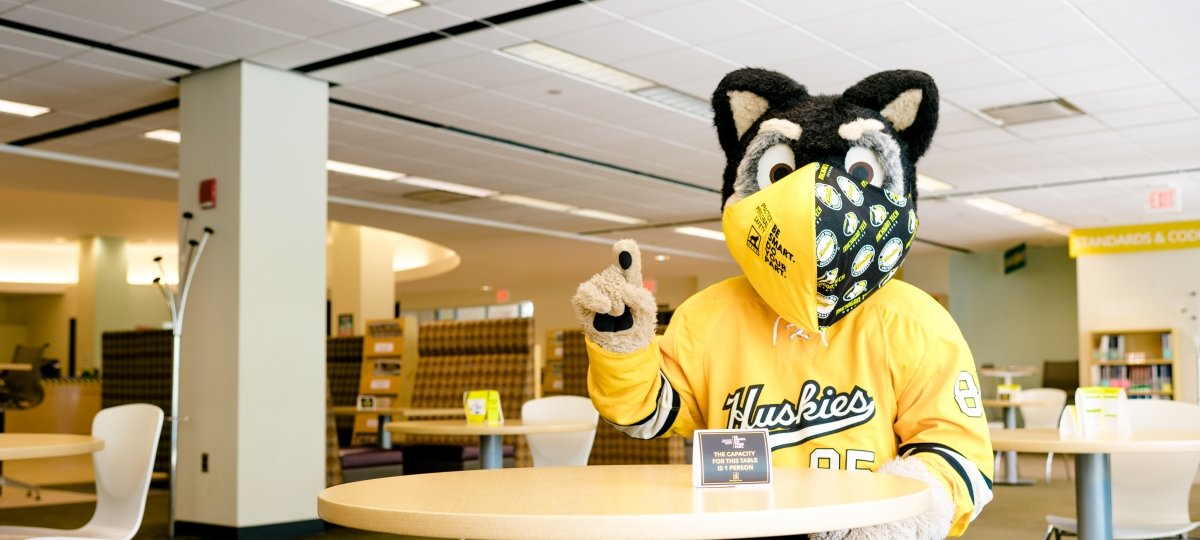Remote instruction remains part of our reality this winter and spring. Student writer Aemili Lipzinski shares advice for instructors and students.
Zoom classes pose a plethora of challenges for students and teachers alike. In times like these, no one is allowed the privilege of being a stranger to technology.
My heart goes out to the professors, teachers and students who are trying their best to study, teach and learn in this era of distance. There are people who have never used video conferencing, much less taught on it, having to adapt from in-person, hands-on classes to online discussion boards and submittable assignments. There are children whose first classroom is a screen. International students worry about getting sent home if they can’t attend in-person classes. Everyone in higher ed chafes at the financial tension between what students pay for and what universities can offer right now.
But we adapt. With adapted learning comes new vocabulary and new tools. We have online classes — synchronous and asynchronous — and remote learning versus in-person learning or hybrid learning.
A common complaint among students taking more online courses is that the workload is heavier. University guidelines say students should expect one credit to take 3.5 hours per week for one semester. Without set class times, though, some classes feel like more work. Or, assignments that are simple in person are two or three times the work online (I’m looking at you, discussion boards).
With more students shifting the way they learn, and more professors squeezing lessons into pixel-sized boxes, we find ourselves needing to embrace creativity. Assignments that worked well in the past may not be flexible enough for current times. Discussions every day might be too difficult for students to handle.
Advice for Teaching
Now is not the time for multistage group projects and in-depth computer labs. Now is the time to think about how you can adjust old assignments for this brave new world. Just communicating during this pandemic is difficult. Students, teachers: Everyone you meet might be feeling stretched thin and burned out. Students may be taking on more responsibilities to make ends meet. Some instructors are, too. They may be in less-than-ideal learning environments or they may not have access to resources that are normally freely available on campus.
If we place engagement as the most important feature of learning — over assignments, essays and readings — it’s easy enough to understand that maintaining that ideal classroom environment is not going to happen. But online engagement is not only achievable, it is also enriching. Let’s embrace how we communicate in virtual spaces.
Smaller groups drive engagement. It’s easy to keep everyone together, but it’s much more effective to break everyone into smaller groups. With large classes and the muting/unmuting dilemma, breaking groups down so students can chat among themselves is probably my No. 1 recommendation for teachers who aren’t experiencing much interaction in their classes. By allowing students to chat about the material in groups of less than five and then bringing them back together, ideas start to flow and conversation generates more naturally.
Encourage students to use the chat if they don’t feel comfortable speaking over Zoom. One of my professors (who is particularly well versed in translating in-person class to online varieties and practiced hybrid classes before it was necessary) uses the chat like a classroom aside. Treat the chat as a possibility for two conversations at once. Use it to draw examples. Use it as a way for students to respond to an opening question or thought to get the ball rolling. If students are worried about unmuting or raising hands on Zoom, have them send questions over chat instead.
Change up long assignments for a fresher, shorter look. Every class is assigning homework, readings, essays, lab reports — extra, extra, extra. If you can't keep up with grading the assignments, that’s a sign students are struggling to keep up with turning them in.
Advice for Learning
One of the most detrimental things that can happen to a student during online or remote classes is falling behind. Students, there’s one thing that’s helped me keep my head on straight. You might think it’s not for you, or you’d never use it, but honestly and seriously, buy yourself a planner. Make a list. Put some stick-on chalkboard on your desk and keep a to-do list on there. Stick a whiteboard to your wall and buy a bunch of colorful markers — whatever you need to do to keep on top of your schoolwork. Try out a digital kanban board like Trello or mega-spreadsheet like Airtable.
Prevention is the best cure to Catch-Up Disease, but if you do find yourself slipping behind, never underestimate the power of a kind, well-worded email asking for an extension (or mercy). Professors are people too, and they’re there to help you. It can feel like the work is endless and there’s no hope in sight, but I’ve found keeping a little grid of weeks through the semester helped me stay on track last fall (read: sane). There is a break in the train, I promise. Take a deep breath. You got this.
Michigan Technological University is an R1 public research university founded in 1885 in Houghton, and is home to nearly 7,500 students from more than 60 countries around the world. Consistently ranked among the best universities in the country for return on investment, Michigan's flagship technological university offers more than 185 undergraduate and graduate degree programs in science and technology, engineering, computing, forestry, business, health professions, humanities, mathematics, social sciences, and the arts. The rural campus is situated just miles from Lake Superior in Michigan's Upper Peninsula, offering year-round opportunities for outdoor adventure.






Comments